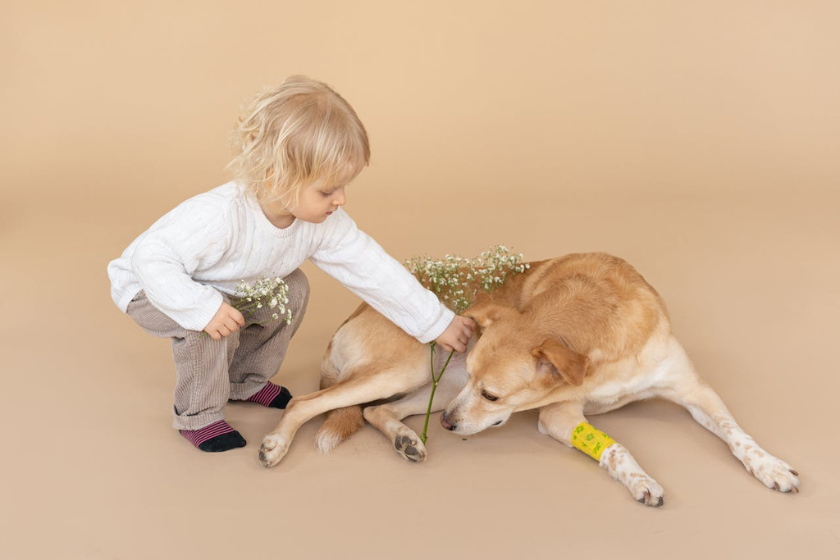
Emotional support dogs probably aren’t exactly what they sound like. To be honest, they’re more. Owning a dog is a great way to boost your quality of life by way of constant companionship and affection, but some dogs can take that job a step further by learning how to provide their owners with greater support.
Most people have heard of service dogs, but an emotional support dog might be an entirely new concept. Both can have a significantly positive effect on their owner’s well-being and safety, but the duties of each type of dog—as well as the training required for their distinctions—are very different.
Service Animal vs. Emotional Support Animal Training: What’s the Difference?
Service animals (dogs or otherwise) are highly trained animals that support owners with disabilities. As such, they must pass rigorous tests to prove that they can provide certain types of high-level care; seeing-eye dogs, for example, need special training in order to help their owners safely move around in public. With that in mind, you might ask, “Do emotional support animals need training?”
Emotional support animals (ESAs) should go through basic obedience training just the same as service animals, but they aren’t expected to perform any specific, physically-supportive tasks for their owner; instead, the role of an ESA is to do exactly what their title suggests: provide emotional support to their owners, individuals who suffer from mental health conditions.
Both service animals and ESAs are protected by the Fair Housing Act, which means you cannot be denied housing or evicted based on your reliance on a service animal or ESA, even if the building management or landlord doesn’t usually allow pets.
That said, you must make sure that your ESA is certified and has the necessary paperwork for you to prove its role to your landlord; in addition, some landlords can still take action against tenants with ESAs if too many noise violations are reported or if the property is damaged.
Furthermore, where service animals are allowed nearly anywhere that their owner can go, including airports, theaters, and restaurants, ESAs are not always allowed in public places, which means it’s best to inquire with a venue or other such location before arriving there with one.
How to Train Your Dog to Be an Emotional Support Animal
Even though their expectations are not as lofty as those of service animals, training is still crucial to set your ESA up for success. Though it’s possible to teach an adult dog some basic commands, you should adopt your ESA as a puppy to have full control over their behavioral development.
With that being said, if you’re wondering how to train a dog to be an emotional support dog as they grow and mature, the following set of tips will help you learn more about the process:
Start With Potty Training
Potty training is one of the most important skills to teach any dog, but if you’re training an emotional support dog, in particular, it becomes even more crucial; the key to successfully housebreaking a dog is consistency.
Dog training for emotional support follows the same rules and concepts as regular training, so make sure you have plenty of treats on hand when you’re teaching your pup to go potty outside; reward them each time they successfully do their business in the right place.
Master the Basic Commands
If you’re dog training for emotional support purposes, your pup will need to be able to perform commands in stressful or sometimes difficult situations. When learning how to train an emotional support dog, practice all of your dog’s commands in a variety of situations to make sure they’ll perform well no matter what.
Most dog owners are familiar with the most common commands for dogs, and teaching your emotional support dog to sit is the best place to start. Once they’ve mastered that, you can move on to more advanced commands like “Stay,” “Come,” and “Down.”
Prioritize Socialization
Dogs need lots of socialization to safely accompany you in public, let alone provide you with any emotional support in a public place. Therefore, as you’re learning how to train your dog for emotional support, consider everything that your dog might encounter out in the world, from other people and animals to loud noises to foreign objects. Take the time to bring your puppy into all kinds of new situations to reinforce their training under pressure and get them used to many types of stimuli.
Teach Deep Pressure Therapy
If you’re wondering how to train an emotional support dog for anxiety, in particular, one of the most effective methods of support that dogs can provide is deep pressure therapy (DPT), a technique that involves teaching your dog to sit or lie down on a certain part of your body to provide pressure and reduce anxiety symptoms.
How Can I Certify My Dog After ESA Dog Training?
Once you’ve finished emotional support dog training with your pup, acquire an ESA letter from a licensed therapist that states your need for your emotional support animal based on your mental health condition; it will serve as proof should a landlord or manager of a public place require it.

Which Breeds Respond the Best to Training Emotional Support Dogs?
Emotional support training for dogs is better suited to some breeds than others. The best breeds for the job are those that are inherently easy to train, such as:
- Poodles
- German shepherds
- Labs
- Golden retrievers
- Corgis
- Collies
Keep in mind that your ESA is also your pet, which means you should keep your favorite breeds at the top of your mind as you choose your ideal emotional support animal.
Get the Support You Need With an ESA
As you figure out how to train a dog for emotional support, make sure to familiarize yourself with your state’s requirements surrounding ESAs (including ESA training) before adopting and training one yourself.
From there, you can look forward to all the ways that your ESA will improve your quality of life: They will be well-behaved and well-equipped to handle any challenge that comes their way, thanks to a consistent training regimen.



